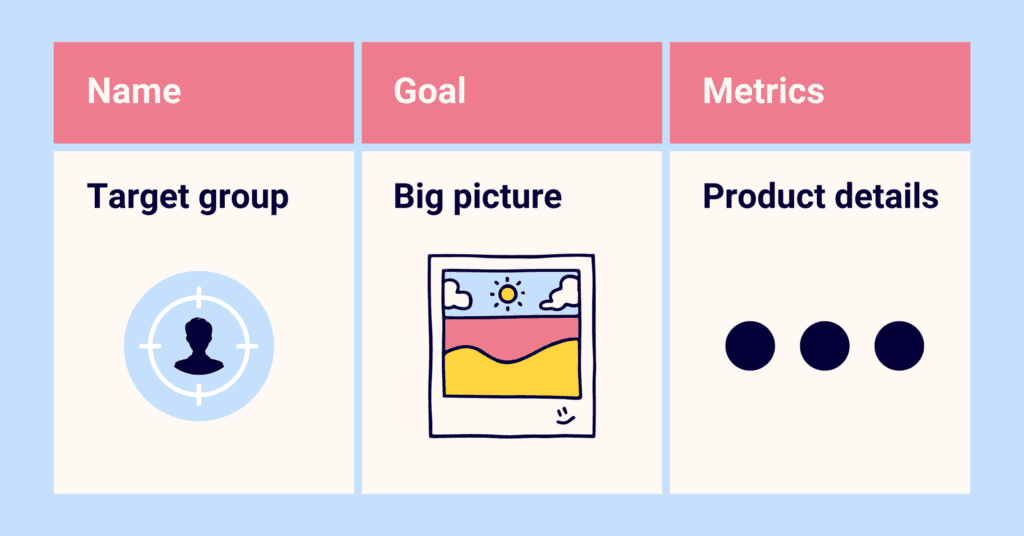🚀 Just Launched: The Ultimate Reddit Marketing Playbook (+ 🎁 Bonus Content)
Have you ever tried coming up very close to a painting in a gallery to study its intricate details? But then, regardless of how mesmerising the details are, do you have an urge to step back and look at the whole picture?
As a different artform, building a digital product means diving deep into its many aspects ranging from user experience, product backlog, and release planning to market research, financials, and many more. While getting those details right are crucial to your product’s success, sometimes looking at some of them too closely and for too long makes you lose sight of other important elements that comprise the big picture.
To help you keep the big product picture in mind, take a step back and create your own Product Canvas.

The Product Canvas is a concise yet comprehensive asset explaining what your product is, why it exists and how it’s positioned to satisfy customer and business needs.
Although you might find variations in the layout and content, usually, the canvas is a one-page document covering the key aspects of your product. The creation of the canvas, in its most popular form within the product community, is attributed to Roman Pichler and dates back to 2012.

A graphic representation of a Product Canvas structure suggested by Roman Pichler
The basic aspects covered in the Product Canvas include:
These core sections in your canvas will help guide your development teams and align them around a shared understanding of your product vision. However, you might want to expand your canvas template based on the function it serves and the audience or stakeholders it’s intended for.
“ …Form (ever) follows function, and this is the law. Where function does not change, form does not change. It is the pervading law of all things organic and inorganic, of all things physical and metaphysical, of all things human and all things superhuman, of all true manifestations of the head, of the heart, of the soul, that the life is recognizable in its expression…"
Sullivan, Louis H. (1896), an American architect, a father of skyscrapers
If you want your Product Canvas to serve a different function, you can change its form and edit the basic sections. For example, if you want it to be more business and marketing-focused, you may include the following aspects:
Some of these areas are usually covered in a Business Model Canvas, which is used to identify the business goals of your product. However, combining technical and business aspects of your product in one template will allow you to marry the best from two worlds. Connecting stakeholders and teams with different backgrounds and areas of expertise in a joint effort will produce a highly-effective and content-rich Product Canvas.
You can create your Product Canvas using various methods – face to face on a whiteboard or with some popular online tools. For example, you may use Canva Whiteboard to collaborate with your teammates in real-time while working on your Product Canvas.
The only rule is to get your key stakeholders – individuals with high interest and power – involved in the process. A collaborative stakeholder community, where individuals trust and respect each other, will help you reach a shared understanding of your product’s big picture.
We have also prepared a template with examples to help you get started with your Product Canvas.
If you need help with your Product Canvas or seeing a big product picture, get in touch with us. We can conduct the research and fieldwork to ensure your product’s true value and potential is reflected in your Product Canvas. Your teams, customers and business stakeholders will thank you for the results it brings.
Next Generation ICT Ltd (TA Fractional Teams) may receive a small commission if you choose to buy some of these products.
Hi! I'm Kateryna Novozhylova, co-founder at Fractional Teams. I write about product, marketing and tech.
Embracing new collaboration trends and techniques is crucial for maintaining productivity across the distributed workforce.
Unconventional channels, such as Reddit and Quora, are rapidly gaining traction, but how can businesses solve attribution challenges?
What is the PSTN (Public Switched Telephone Network), why did it matter so much and why is it still here?
Digital Content
Events and Community
Products and Propositions
Lead and Demand Generation
Technical Platforms and Services
Fractional CxO
Technology Vendors
Industry Specialists
Service Providers
Company
Events
Careers
Resources Hub
Case Studies
Blog
Mini SEO Audit